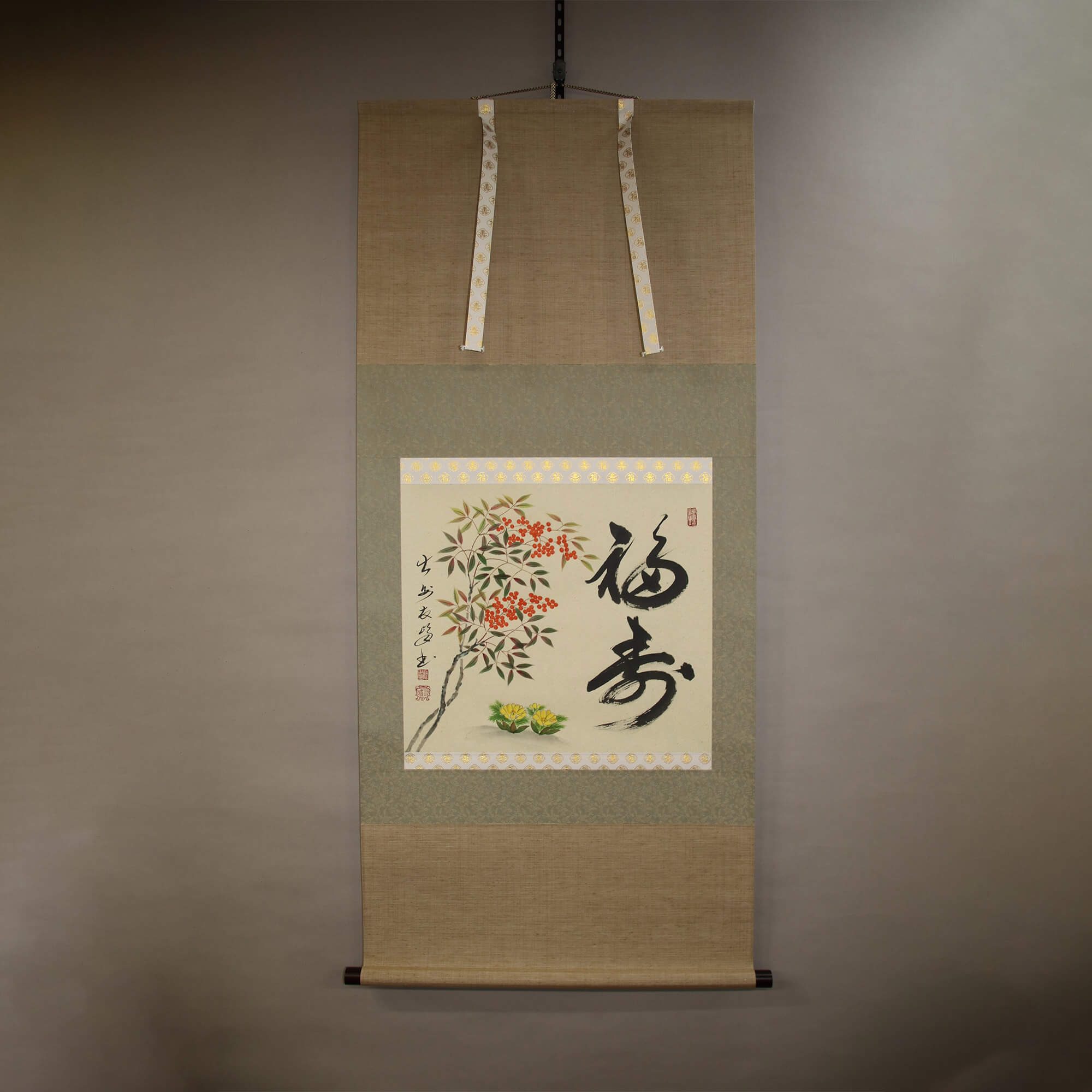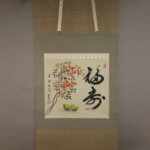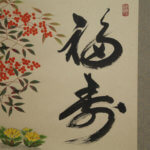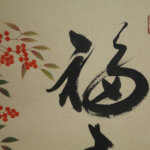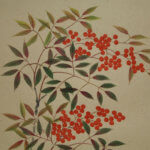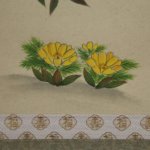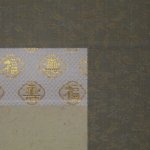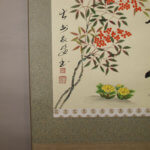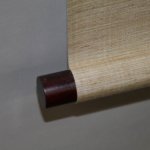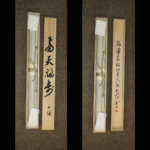Products Lineup
News / Blog
Other Menus
Kakejiku Hanging Scroll: Calligraphy : Long Life and Happiness & Nandina and Adonis Ramosa Flowers / Takahashi Yūhō - Nanten Fukuju
- Product ID
- 0255
- Name
- Takahashi Yūhō
- Profile
The chief priest at the Daianzen-ji temple in Fukui pref.
1948
Born in Fukui city, Japan
1970
Graduated from the Kyoto Hanazono University (Major: Buddhism)
Joined and practiced asceticism at the Kaisei-ji temple in Hyogo for 6 years1989
Appointed as the chief priest at the Daianzen-ji temple in Fukui
2008
Exhibition at the Takumi museum in JR Gifu Station
Exhibition at the art gallery in Inoue department in Nagano2011
Opened a gallery in the Daianzen-ji temple
Also appointed as the chief priest at the Housyou-ji temple in Ishikawa
Exhibition at the “Gallery Metanoia” in Paris, France2014
Performed at the Sarah Lawrence College in NY, USA
- Size
- 690mm x 1440mm
- Roller End Material
- Ceramic
- Material of the Work
- Japanese paper
- Price
- JPY 80,000
- Stock Condition
- In stock
- Payment: Click the Paypal Mark
- Duty and Taxes
Import duty and taxes are beyond our control and may apply to your shipment. Please noted that these fees are the responsibility of the buyer.
- Description
Nandina and adonis ramosa flowers have long been prized as plants of good omen. Punning on a saying ‘A trouble turns into a happiness’ (Trouble =Nan= Nanten/Nandina, Happiness=Fuku =Fukujyusō/Adonis ), these plants have been painted by many painters as an auspicious subject.
This is a joint work by a Japanese-style painter Miyake Wakō, who painted Nandina and adonis ramosa flowers, and contemporary Zen monk Takahashi Yūhō, a renowned expert calligrapher, who wrote “福寿 fukuju” next to the painting. The vivid colors of nandina fruits and adonis ramosa flowers and the vigorous calligraphy of “fukuju” successfully indicate the strength to ward off bad luck, accordingly being one of the very works of good fortune.

